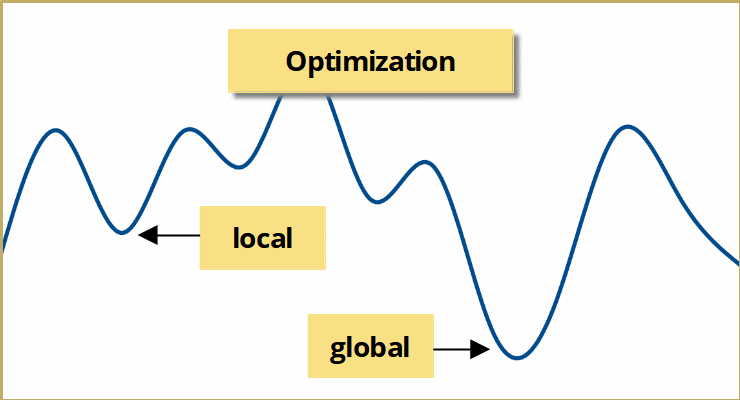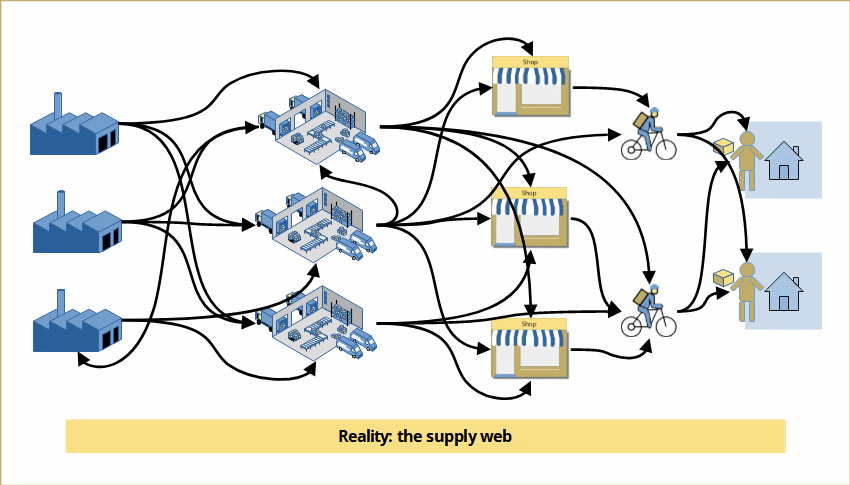
Latest since Covid everyone is aware about the importance but also about the fragility of supply chains. No wonder that a Control Tower which addresses the entire supply chain is a hot topic in material handling related publications (btw like this one 😉 )
The concept of the Control Tower is convincing:
- Creating transparency over the entire supply chain
- Balancing of stock levels and capacities
- Real time demand information over the entire supply chain
- Early and accurate reactions to demand and capacity updates
- Support and information base for strategic supply chain decisions and optimizations
- Automated monitoring and alerts
- Interfacing to local supply chain modules like WMS or Yard Management
In essence, the means for a true global optimization of the supply chain!
At least in theory. Let me first explain why I am skeptical about Control Tower being the silver bullet for supply chains. And then we will look at potentially feasible environments for real world supply chain Control Towers.
Theory vs. Reality
Let’s start with that big feature: global optimization of the supply chain. Without a Control Tower every entity or member within the supply chain does its local optimization. In many cases this local optimization is supported by up-stream and down-stream demand or forecast data. But at the end it is still a local optimization.
Global Optimization ?
Here comes the Control Tower concept: looking at the entire supply chain and providing a means to achieve a global optimization. Who wouldn’t want this, right? Well I tell you who wouldn’t want this: the guy who has to take a local hit for that global benefit. Because for a supply chain that global optimum often translates into a local sub-optimal situation.
Someone, some entity within the chain, might have to do things like carrying extra inventory or decrease demand. If the supply chain is not balanced, one or several entities have to adapt. That’s the nature of achieving a global optimum of interlinked organizations.

This leads to some extremely important questions for a Control Tower set-up:
- What defines the optimum? Is it minimum costs? Highest output? Maximum flexibility? Depending on where or who you are within that supply chain your answer and your goals might be completely different.
- Who has the authority to make that call for someone (else) to take the local hit for the global benefit?
- How and by whom is the entity compensated who takes that hit?
Unless there is a ‘dictator’, a dominant player in the supply chain, these questions are very difficult to answer in a real life environment. This brings us directly to another important and yet also unanswered question for Control Towers.
The Supply Web
What if the reality is not a linear supply chain but inter-weaved lines of various supply chains forming something which looks like a web?

Let’s use a simplified example to illustrate typical supply relationships. Imagine a supply web with just three levels:
1. The manufacturing supply level. (Think of P&G, Nestlé, Pepsi Co., Johnson&Johnson etc.)
2. The wholesale and sales level. (Think of Walmart, Tesco, Metro or Aldi)
3. The last mile e-com level. (Think of Delivery Hero, Gorilla or UberEats)
Everyone from level 1 is linked with everyone from level 2. And there are also many multiple links between level 2 and level 3. Even with this very simple example we end up with a complex web of supply chains. Hence the supply ‘chain’ looks more like a supply web.

I recently participated at a very interesting event which exactly discussed this scenario. And a representative from level 2 (one of the really big names in Europe) very unmistakably stated “My company will certainly not be part of the Control Tower of X” (I will not disclose who that supplier X is, other than that it is a leading FMCG company with over 50 billion US$ turnover). And then he continued “They have to be member of our Control Tower and not the other way round.”
Bigfoot
Our real life supply links have much more similarities with a web than with a chain. Which makes the definition, the set-up of a Control Tower many times more complicated. What is included, what is not? What must be included to be meaningful in the first place? And also the actual operation of such a Control Tower web is a yet unsolved challenge.
A Control Tower needs to be actionable. Otherwise it is just a screen with blinking lights. So far an actionable Control Tower for a supply web was not sighted. It might be the Bigfoot of logistics.
IT Complexity
IT systems are based on a process model of the business or processes to automate. As a consequence of the above the IT implementation of the Control Tower concept is a real challenge.
Have you ever participated in a WMS implementation project? (WMS := warehouse management system. See link to learn more)
A typical WMS consists of hundreds of tables, each of them with so many attributes that they total to a substantial 4 digit, sometimes 5 digit number. Establishing a Control Tower means interfacing dozens and dozens of these WMS.
Can you imagine the complexity of the project to understand the myriad of these different tables and attributes? Looking at thousands of attributes, understanding their individual definitions and to which processes they are linked. I fear that in many cases this project is so complex and hence costly that it will become difficult to make a viable business case for a Control Tower.
Something Positive: it can be done !
This sounds as Control Towers will never work. There are actually some real life Control Tower examples. Most of them fall under the category “one dominant player”. With this one dominant player, e.g. an automotive OEM:
- SKU range / data set is limited to the requirements of the dominant player
- The complexity booster of a supply web is avoided
- It is well defined who has the authority to make decisions
Most of the actual Control Tower implementations are so called Analytical or Visibility Control Towers. Operative decision and management relies on conventional means and organization, enhanced by the data and visibility provided from the Control Tower.
And with a buzz word also come the hijackers. Solutions which are branded “Control Tower” but essentially are conventional local optimization tools with some enhanced interfaces for data exchange up- and down-stream.
Do you have a different take on Control Towers? Are you already actively using a Control Tower? I’m curious to hear and learn from you.
Comments:
E.B. wrote on 15.Jan 2022: “Indeed, some people will not like the key statements in this article. However it’s true – the complexity of a true control tower will eat up all the expected savings.”
H.M. wrote on 04.Feb 2022: “The presented one-dimensional optimization curve is too simplified. If all participants in a Control Tower were transparent with respect to all optimization criteria (logistical and financial), multidimensional optimization could lead to a win-win situation with no net losers. Find out more about multi-dimensional optimization at www.mutzke-ses.com .”
